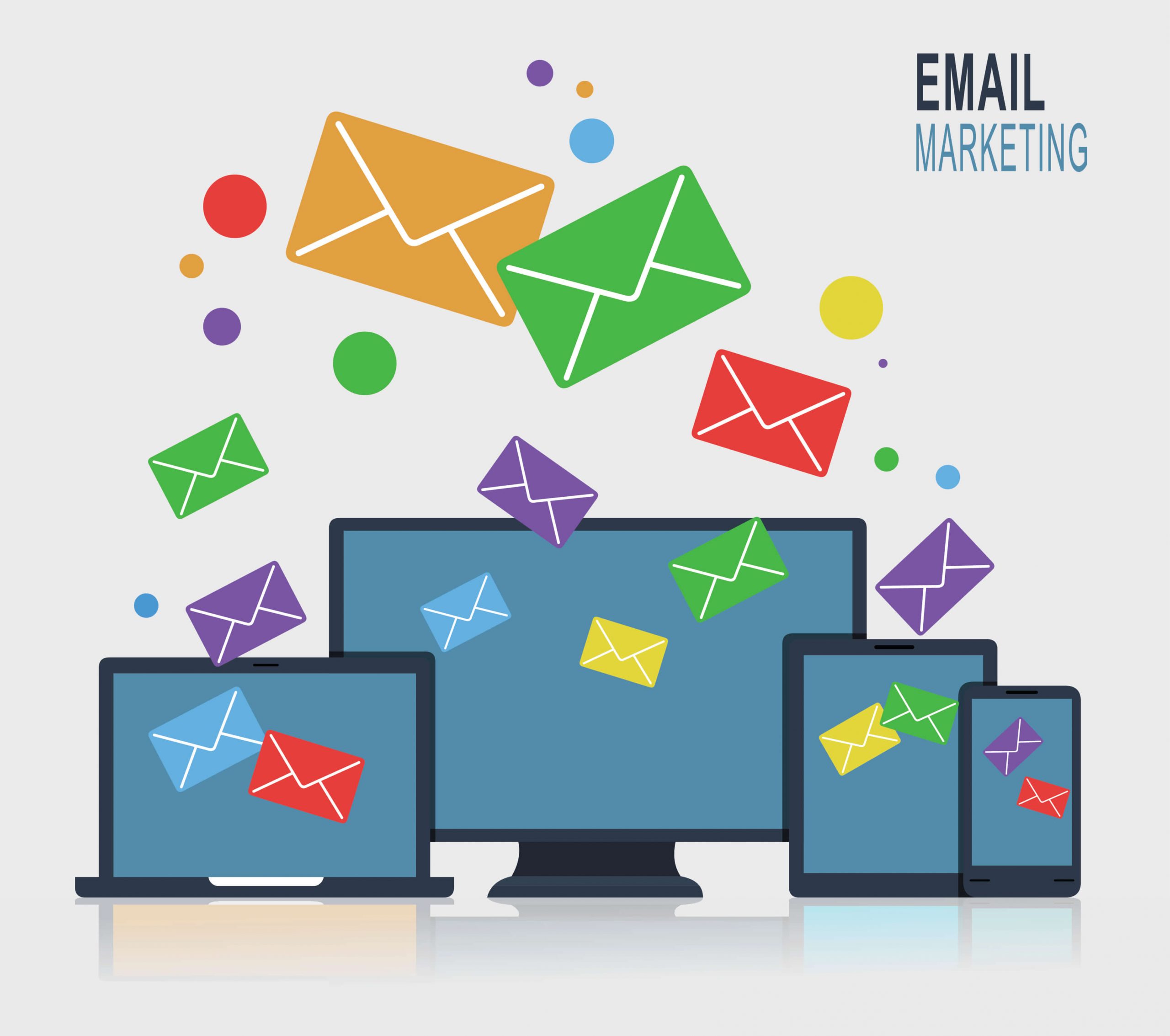Subscribe to the Digital Brand Building Podcast:
Hello everyone, welcome to the digital brand builder. Joining me today is Robbie Kalman Baxter and we’re going to talk about one of my favorite subjects, and a subject, I need to know more about which is what brought Robbie on, and that is subscription models and what she calls a forever transaction with your customers, how do you grow lifetime customer value I mean this is such a critical skill for marketers if you’re in the SAS business or any kind of subscription business. You’re going to want to tune in and stay tuned into this so welcome. Robbie to the show.
04:34 Robbie Kelman Baxter
Thanks so much for having me mark.
Mark Fidelman 04:36
My pleasure. Can you tell us a little bit about yourself in 100 words or less.
Robbie Kelman Baxter 04:42
Yeah, I’m a subject matter expert and advisor on membership and subscription models, and I’m the author of the membership economy and the forever transaction, and I work for organizations to move to a long term relationship with their customers to enjoy recurring revenue.
Mark Fidelman 05:03
Wonderful. And so you’ve just completed your second book right. Yes. Okay, we’re gonna dive into that a little bit. But first of all, can you kind of explain what we’re focuses on, say, the subscription models or is it just SAS businesses or is it across the board or just kind of give us a kind of lay of the land of what you’re focused on.
Robbie Kelman Baxter 05:26
Yeah, well, I first got interested in in subscription pricing. About 1718 years ago when I was doing some work for Netflix, and I fell in love with their business model and the way they were so focused on doing one thing really well, the people they serve. That which is professionally created video content created in, with delivered with cost certainty in the most efficient way possible. And I saw how they stayed focused on delivering on that promise to their members. By continuing to add to their catalogue of content, improving their technology, and really not letting themselves get distracted by any other things that came their way video games or user generated content or anything else just doing that one thing really well. And as I was falling in love with that model, everybody else was too and they I started getting calls from people who said hey we want to be the Netflix of our space, whether that’s Software as a Service SaaS as you talked about, or media, you know, news, music, and then crazy stuff bicycles dental brain pain management products insurance. Everybody was trying to figure out how to be Netflix and what I realized was, you can’t be Netflix, but you can start to apply these principles that I can put into a framework, almost any kind of business can use to build recurring revenue with the people they serve that there were these principles that applied it was this new world this membership economy, and businesses could use those principles to kind of reach the holy grail which we all want which is you know subscription revenue Predictable Revenue direct relationship with the people we serve and tremendous loyalty. And so, I’ve worked with companies across more than 20 Industries. I’ve worked with brand new startups, with just you know a solopreneur. I’ve worked you know with with with fan clubs and influencers and I’ve worked with digital natives Survey Monkey, you know, LinkedIn and then I’ve worked with really big traditional old line businesses consumer products, retail heavy equipment you name it somebody wants to join the membership economy.
Mark Fidelman 07:47
Can any business join this membership economy or is it is it really limited.
07:54 Robbie Kelman Baxter
The only things that I found that don’t really work are businesses that don’t need sales and marketing, so if your last gas for 100 miles or you have the patent on a drug that is going to save certain people’s lives and they have no other choice. You know you can treat your customers terribly and not work on a relationship at all because they’re going to find you, and they’re going to use your services. But even those businesses run the risk of being disrupted by a substitute that has a better model and is more customer centric. But for those of us that are you know marketers working with with businesses any business that works with marketing any business where the customer has choices to achieve their goal or solve their problem, those businesses can benefit from the principles that we’re talking about.
Mark Fidelman 08:48
Okay, so let’s, let’s then start now that we have the overview let’s then start from the beginning, and I’m very curious as to how Robbie if you’re brought in to help some of these organizations or maybe you have some examples from your book. How does somebody really decide on what their membership program is going to be. That’s the first question, and then followed by okay you decide what it’s going to be, how do you decide on how to price it.
09:13 Robbie Kelman Baxter
Yeah, so the first thing you want to do is think about what is your forever promise and who are you making it to. So those two questions, go hand in hand. The promise is, what is it that you’re going to do on an ongoing basis for them that justifies their loyalty and engagement and willingness to pay you on a regular schedule. So it’s kind of the difference between I’m going to sell you a blazer and I’m going to make sure you always look appropriate for any professional occasion, right there’s, it’s a different way of thinking about what you do for your customer. So you want to know what’s that promise and then who is it for so in the world of clothing is that for you know is the promise about professional or is the promise about looking stylish or is the promise about variety ease convenience cost savings. So you want to really think about who is this person and what is the promise you’re making to them. And then you want to think about what is the goal that this membership is going to serve for your business. So is this about what is what is the challenge that you’re facing Is it about the revenue, or is it about deepening the kind of marketing relationship that you have with your customers a lot of membership models or need for deepening the relationship, so that when a lumpy purchase needs to be made, you’re the one that has the release. So those are kind of.
10:46 Robbie Kelman Baxter
What is it that you’re delivering what is the value you’re delivering. And then, you know, you get into pricing.
10:54 Robbie Kelman Baxter
Right. Oh, yeah, so do one. So,
Mark Fidelman 10:57
yeah, I’m sorry. We’ll cut this part out, but why don’t you talk about pricing so for, for example, you know, I’ve got a course that I’m trying to figure out pricing for, and I want different levels, and I’m not calling a membership but I’m thinking rethinking that based on our earlier discussions. So how would you go about determining price for something like that or you can get into, you know, products product pricing I know Amazon’s probably studying this to death, and they’ve got subscription models for just about everything. But, so, you know, first a service and then a product, how do you determine price for those things.
11:36 Robbie Kelman Baxter
So let’s say that you’re that you’re trying to price for a service let’s say that you’re a solopreneur subject matter expert or celebrity, and what you’re really charging for what is the forever promise that you’re offering and maybe if that’s about. I’m going to teach you how to be successful in digital marketing. So you want to think about, well, who is that for Who are you going to help be successful in digital marketing is this for an individual, that’s trying to build their, their independent personal brand, or is this for you know a fortune 50 company so you really really want to get clear on who you’re doing it for you want to understand what is the value of providing this benefit forever. And then you want to kind of work backwards like what I always suggest to my clients is triangulate between what is your actual cost because you want to cover your costs and make it worth your time. You want to think about what are the substitutes what are the other alternatives that somebody would have to achieve that same goal. And you want to think about what is the value to that member of providing you know whatever you’re the access to your to your services. So those would be kind of the three things that I would use to come up with a price. The other thing that I would keep in mind is what is the goal of this offering is this something that you want to do to kind of bring everybody into your community you want to build a footprint, you want to kind of lock them into your community, in which case you might care less about optimizing for profit or is the whole shebang so for example Netflix, they only make their money from the subscription. Right, so, so they can’t give it away. On the other hand, LinkedIn, gives away a tremendous amount of value. Because if we weren’t there, the non paying members of LinkedIn weren’t there, there would be no value for the recruiters and the job seekers and the sales people that are paying the higher level subscriptions. So it’s really important to understand your, your model, and where the revenue is coming from you out you know you asked about Amazon Amazon’s model of membership amazon prime. You know, there’s been a lot of, you know, a study done on that and the revenue that they generate from it. But, you know, the biggest value that they get is not necessarily the revenue from Prime, it’s the behavior change that it drives once you sign up for Amazon Prime you buy everything from amazon prime, and then you start to use the other services that you didn’t initially sign up for, but they come with prime and you start to get exposed to that so things like using your Kindle. You know, the free books that you can get from them, the three storage you get from them. Yeah, the video content you get from them the music you get from them. And suddenly, their footprint they own you you’re you’ve made them a habit, and having that having that relationship to the customer gives them permission to sell a whole bunch of other things.
Mark Fidelman 14:49
No, I love, I love these big holes I’m, I know that a lot of people listening are gonna wonder well you know I’m not Amazon, and I’ll have other services to offer. Is there something. And I don’t know if you want to pick a retailer who’s really struggling right now. If you don’t know this It’s May one 2020 we’re in the midst of, kind of a depressing situation that you’re probably all aware of. And if you’re listening from the future. A lot of retailers are struggling, and some of them are if they’re not they’re not essential but not even in business, so they’re trying to figure out how they can pivot and change your business model so my question is okay if you’re speaking to those people. How would you advise them to create some sort of subscription or membership program.
15:36 Robbie Kelman Baxter
Absolutely. So we’re already seeing some, some early adopters and innovators. When you want to do like let’s say that you want a toy store, a local, you know, local toy store, you might build a direct relationship with your neighbors, where you deliver toys on a regular schedule that align with the child’s maturity level, you know so different different gifts. You might also say for members of our store so that’s kind of one model which is sort of the subscription box model, where you get, you know, a new product periodically and maybe you overlay that with insights about the value of play, how children, you know, are developing, you know kind of what you can do as a parent or grandparent or a good friend to support your child’s growth and creativity, that would be one model, another model would be what I think is very popular right now is that the premium services model, which a lot of retailers are adopting kind of following in the footsteps of Costco, but it’s a model where you say you pay a fee because this is a store that you know you’re going to use a lot. And so you get better value and better service for being a member. So this is where you know you might say again if you’re at the toy store, you might say well if you’re a member of our toy store, you get free wrapping. You get notified with, you know, when certain things go on sale, you have access to a toy concierge so you can call up and say hey you know I have a 10 year old birthday party. I need to present Can you, you know, help me pick something rapid and drop it off in my house, for example, that kind of service level of the Restoration Hardware is doing something in that space right now CBS is doing something in that space right now, different benefits of course Restoration Hardware it’s more about getting decorating advice. Access to swatches without having to put a deposit down and pretty large discounts, in exchange for your hundred dollar fee to be a member, and, you know, another example CDs where you get discounts on certain products you get kind of jumped a line at the pharmacy which is a big deal, especially right now. So thinking about what is it that you what are the problems that your members are coming to you for that you’re not quite delivering on. Right. And why do I go to the toy store I go to the toy store because I want my kids to have, you know, fun developmentally appropriate stuff and I want family games and activities that keep us connected. Why do I go to the pharmacy, because I want to stay healthy or get back to my optimum health and I want expertise, and I want it to be no cost savings. So how do you build that into your membership.
Mark Fidelman 18:28
Great advice. So, okay, and I know you can go on and on this subject and I encourage you to read Robbie’s book, and there’s gonna be more examples there. But let’s Let’s now move to the next phase which I assume and let me know if I’m missing a step. So you’ve got the idea you know what you’re gonna do, you got the pricing down. Now it’s like okay how do you deploy this and get the word out.
18:51 Robbie Kelman Baxter
Yeah. So if you’re a going concern. Let’s go back to this, you know, kind of marketing expertise example you’re going concern you have real clients. You’ve, let’s say that you’ve picked a segment of your real clients that you want to serve through your membership. The first place I would go is to your actual clients that are actually getting something that is pretty close to what you’re going to offer so in other words they’re the ones that are already availing themselves of all of your services, they’re the ones that have kind of verbally said to you. Just tell me what I need to do, and I’ll do it because I trust you and I know you understand this space better than I do. They’re going to be the easiest ones to sell this to because you’re almost doing this already, and that’s going to be a good place, Derek, and to see how the membership works, what your actual costs are, you know, for example, a lot of service membership say one of the benefits is you have access to call me whenever you have a question, and people are often really scared, I offer this actually for, for, you know, my, my business I have, you know, unlimited access to me and when I first started doing it I was really worried that people would abuse it, they don’t, they really don’t. But But when you’re trying it out you wanted to see and make sure are people abusing the services, what are the actual costs I’m incurring. How is it working is it deepening the relationship like I hoped, is it doing the things I had a hypothesis about what this was going to do for my business. I had a list of hypotheses, how many of these are actually true so you start there. Once you know that somebody’s doing this gets value, it’s profitable for you. And it engages them for the long term. That’s when you want to turn on your loudspeaker because you know that the, you know, if you can bring them in, they’re going to stay and be very profitable and be very happy. So that’s when you start working on, what is your, I always think of it is your trigger benefit or your headline benefit that gets somebody to join. And once you know that, you know, then you can work your way basically you’re working backwards up the funnel. You start by saying if somebody joins are they going to stay. That’s the first thing to test, then you say, How do I get them to join. If I have them in front of me. So forget the kind of marketing piece if I was in sales mode hand to hand combat of sales. How would with with this confidence that if I had a prospect in front of me. I could get them to sign up and that they’d be happy. The answer to that is yes, then you say what are the ways that I can bang the drum and build awareness to bring those people, to me, and you’re an expert on that so I’ll leave it at that.
Mark Fidelman 21:29
Yeah and you know I’m kind of going through that right now. If you look at the best in the business for what I’m doing in terms of courses. What they do is a long lead up a kind of a launch, and they work with influencers and keeping a very short here but they work with influencers to help build anticipation. And they, they build exclusivity and they say it’s only open for a few weeks and all that these, these tactics I find manipulating, but you know I’m so deep in the business that I understand what’s going on. A lot of people feel like they don’t want to lose something, so they know there’s only a three week window to join that you know particular course or mastermind, you know, they get they get this anxiety about it and they sign up and when if they thought about more maybe it’s sad maybe the timing isn’t right for them. But
22:17 Robbie Kelman Baxter
here’s the thing. That is great, bringing people and giving them you know a sense of scarcity and and prestige to join something, those things are great in a membership model when you have a subscription, the way that you benefit it’s not a transaction that happens one time as a transaction that keeps on happening. So, you have to before you do those things before you reach out to your influencers before you, you know, start, you know, sending out the signals that this is a scare
22:50 Robbie Kelman Baxter
they sign up for that first month, they’re the right person to stay forever.
23:03 Robbie Kelman Baxter
Join and then they leave, because it’s not a fit for them. So that’s why I’m sort of suggesting that you make sure first that your offer has a very very long life cycle, before you invest in those. Those acquisition tactics those awareness and acquisition tactics, but they can be like those tactics work great at getting people in the door which is, which is really powerful.
Mark Fidelman 23:27
Okay. And I agree, I mean there’s so many acquisition tactics that that I mean that’s your right that’s what I do is I figure out what’s the best one for what you’re trying to do, whether it’s a subscription model, or whether it’s you know something else. There’s a variety of different things that you can do in order to maximize the top of the funnel type activities to bring people in and it really depends on what your subscription or membership model is there’s not one size fits all you really got to be strategic about it and then educate people as to, you know, why should I join a subscription Why should I. Why should I do this or that you gotta, I’ve already touched on a lot of reasons why. But you have to make it so plain and obvious to them they say yeah, it’s a better deal for me, and I don’t think not anymore.
24:15 Robbie Kelman Baxter
Yeah. And once they join you as the, as the business owner. Subject Matter Expert the influencer, you want to really think about what is it that I can provide for this person on an ongoing basis, how, how am I going, who is the person that’s going to stay with me for a long time, because it’s so much easier to generate revenue. If, if your customer stays with you than it is if you have to keep going out and finding new ones.
Mark Fidelman 24:46
Yep. Great. Totally agree so let’s Let’s now move to kind of a post acquisition phase let’s say you get them on a subscription model or membership model. How do you keep them there. What are so do you have some specific examples, or some
25:02 Robbie Kelman Baxter
very specific. Yeah. So, and again, I encourage people to think about this before you put on your loudspeaker before you reach out to your influencers before you do your marketing campaigns to bring people in. You want to make sure that if you get them, they’re going to stay so that involves what I think of as engagement metrics and engagement features. So these are the features that are going to make somebody say, Hey, I came for that pitch I came for that one thing that they were marketing, but I’m staying. Because something, whatever that is. So for example, I might join a committee like an expert community because I want to learn, you know, the five ways I can use video or the you know whatever the specific things, and then the reason I stay is because I say wow you know everything this person teaches me about marketing is something that I haven’t heard anywhere else. This is actually a really good place for me as a marketing practitioner to stay ahead of the curve, it’s my secret weapon for new and emerging trends in the digital world that’s very different than I have this very specific task around what we’re going to do this month around video. So I come in for the trigger I stay for that bigger reason I might also stay another hook that keeps people for the long term is the community itself, which is the people under your brand umbrella that have similar goals and help each other they’re actually creating value under your brand. They’re, they’re part of the product. So for example if there’s a whole group of people and we’re all marketing leaders that are organizations, and we have this opportunity together under the umbrella to talk about our digital marketing strategies. How amazing have people that have the same vocabulary and have sort of been learning from the same expert to be sharing our real world successes and challenges that becomes part of the value and then I say, you know, I came for that course that I’m staying for this community of trusted colleague. So that’s really how you want to think about how you keep them. And the other thing I would say is, especially in the world of subject matter experts and thought leaders. One of the things that you want to do is balance between your current members who are pushing the envelope on what you do next. Kind of like, okay, I’ve, I’ve absorbed all the expertise you’ve taught me. What’s next, you know I’m doing all the things you said what’s the next thing what’s what’s coming around the curve, you want to always stay a little ahead of your best members. On the other hand, you want to think about tomorrow’s members and see what is, what are their choices right now, what are their challenges and am I rolling out the welcome mat for them, because if you have a really successful membership. The risk is you focus too much on today’s members and forget about tomorrow’s members and even make them feel like outsiders when they join. And, and what ends up happening them is they look for an alternative or they create their own alternative.
Mark Fidelman 28:07
Okay. And. Okay, so if. Is there something you put in place to kind of measure the success of each of those things is there. How do you know things are going well or not going well are they benchmarks. Okay. The
28:24 Robbie Kelman Baxter
first thing is, most people, if you have a monthly membership. Most people quit after the first month. Vast majority. And then the second month is a little bit better and the third month is a little better, and usually in most businesses by about the fourth month it levels off, and then people stay for whatever the duration is at the value of membership so in Netflix’s land it might be three years or more. I was talking to somebody the other day who runs a program to help solopreneurs start their businesses. He was finding people were dropping off at seven months, so you want to understand the true customer lifetime value you especially want to track onboarding to make sure that people are doing the habits of your best customer so in other words when they join. So for example if one of the benefits initial benefit is joined to take the class, but you know that the reason people stay is because of the relationships they establish while they’re taking the class. You want to make sure that they’re establishing relationships so you want to start figuring out what are the engagement metrics to track that tell you that somebody is making your offering or your community, a habit. So you want to track those engagement metrics, and you want to really understand retention retention is not very sexy. But it’s super important and very lucrative if you understand why people are canceling their memberships, you can fix it. And you can fix it and lots of different ways you can fix it by communicating the value, better in the first place, you can fix it by onboarding members, better if the reason is that they joined, they had all these high hopes but they never figured out how to become part of the community or how to access your catalogue of content or they never made time to access the content. You can kind of provide breadcrumbs to get them there. If the reason they’re leaving is because they’ve consumed all your content and believe you have nothing left to teach them. You might want to add more content, but tracking retention is probably the single most important thing you can do to optimize your long term lifetime value.
Mark Fidelman 30:25
And there’s all sorts of charts and graphs and there’s a certain level that you got to keep signing people up at versus people canceling or else your, your situation you get into trouble. I mean, I have a lot of data experts that have given me those those charts and graphs and for the purposes of this podcast we’re not going to go into them. I might have them on later to kind of explain it but it’s really critical to kind of monitor monitor that and make sure that you’re above the line, else you’ve got a failing business over time. And like you said if you might if you’re monitoring that you’re being very communicative and you can make the adjustments, you can you can change that trajectory. So, yeah, very, very well said. Is there anything that we haven’t covered Robbie that we could have covered that people in this podcast or listening to this podcast should know I know you’ve got a book that goes far deeper into all this stuff but is there anything at a high level that we can give to the listeners to create a better subscription program or membership program.
31:27 Robbie Kelman Baxter
I think the one other thing that I would want to share is that, for better or for worse, you know, five years ago when membership economy came out, I wrote it because it didn’t see what I was seeing, they didn’t see the power of subscriptions and membership. Five years later that is not the problem anymore. Everybody understands that subscriptions are really valuable and important, but they’re not necessarily executing in a way where the product offering justifies subscription pricing where the offering is actually something that is for the long term, and provides ongoing value and consumers and businesses alike are getting much more sophisticated about subscriptions, and there’s some subscription fatigue out there. So when you introduce a new subscription. The good news is that your customers prospects are going to understand what a subscription is they understand how to be billed for it they’re willing to do subscriptions, but they’re also going to really want to see that you’re offering justifies subscription pricing so I would just encourage you, before you go out there with a subscription. Just ask yourself, Is this something that makes sense, like what is the reason this is a subscription and not something that you can purchase outright.
Mark Fidelman 32:47
All right, good. I mean this is so valuable if you’ve haven’t listened to this again I encourage you to do it. The other thing that you should do is buy Robbie’s book we’ve got two final questions Robbie. And I asked everybody, this. And the first question is what is the hottest digital marketing technology that you recommend. I could tell you that you told me stream yard. Earlier,
33:12 Robbie Kelman Baxter
just gonna say stream yard I just, you know, I’m LinkedIn live beta tester so I’m one of the first, I guess, 500, people to have a live on on LinkedIn. And I’ve been using stream yard as a way of, you know, sharing my live streams both on LinkedIn and Facebook and YouTube so that’s been that’s been something that I’ve been really having fun with.
Mark Fidelman 33:36
Okay. And our second question is who’s influencing you today in marketing.
33:43 Robbie Kelman Baxter
Well, today it’s you. I mean, candidly the conversation we had about how to think about video in my own business is very powerful and really thought provoking for me to think about very practical ways that I can be incorporating I always talk about how you package value. I have this expertise in subscriptions in membership and business models in strategy. And I packaged it as a book I’ve packaged it as consulting I packaged it as keynote speeches. And I’m starting to do more around packaging and video and candidly I found you did not pay me because Mark did not be shocked, but what he is teaching is actually something that I really need to learn at this moment in my career.
34:30 Robbie Kelman Baxter
Yeah, I,
Mark Fidelman 34:33
I would encourage everybody really to take a look at and I’m gonna be doing a lot of free stuff. And, but if you want to get the next level if you really want to turn video into this video sales funnel and really move it to the next level and where you’re not breaking breaking the bank, I mean you can I mean you can spend a lot of money if you’re a corporation, but you can also do it from home if you’re a solopreneur and you have a good idea. It’s, there’s no better medium, and I’ve what all I’ve done is combine it with a sales funnel, we figured out how to combine these videos with sales funnels on nearly every channel, and show you how to do it very very inexpensively and lead to a high ROI sale, again if your product or service resonates with your target audience so. All right, Robbie so wonderful conversation. Where can people find you and buy your book.
35:26 Robbie Kelman Baxter
My book anywhere Amazon Barnes and Noble, your local indie booksellers who probably need your support more than ever. Books really easy to find it’s in, it’s in Kindle it’s an audible print it’s going to
Mark Fidelman 35:40
be in multiple languages, give everyone the title again.
35:42 Robbie Kelman Baxter
It’s called the forever transaction, how to build a subscription model so compelling, your customer to leave. And you can find me on. Robbie Kalman Baxter calm, his website there’s tons of content there. you know, print, video, audio, lots of goodies and, and you can find me on all social media, mostly LinkedIn and Twitter.
Mark Fidelman 36:12
Wonderful. All right. Bobby thanks again for joining us on the podcast I think you know in a couple months you should come back and talk about perhaps what we’ve combined together because we’re going to work together, going forward, and would be interesting to kind of combine that element that you’re talking about in terms of subscriptions and memberships with a video sales funnel, it could be quite interesting.
36:37 Robbie Kelman Baxter
Really interesting.
Mark Fidelman 36:39
Wonderful. Thanks again and. And we’ll talk to you soon. All right. All right, I’m gonna cut out that ending, no one like we’re getting off a call or something.






